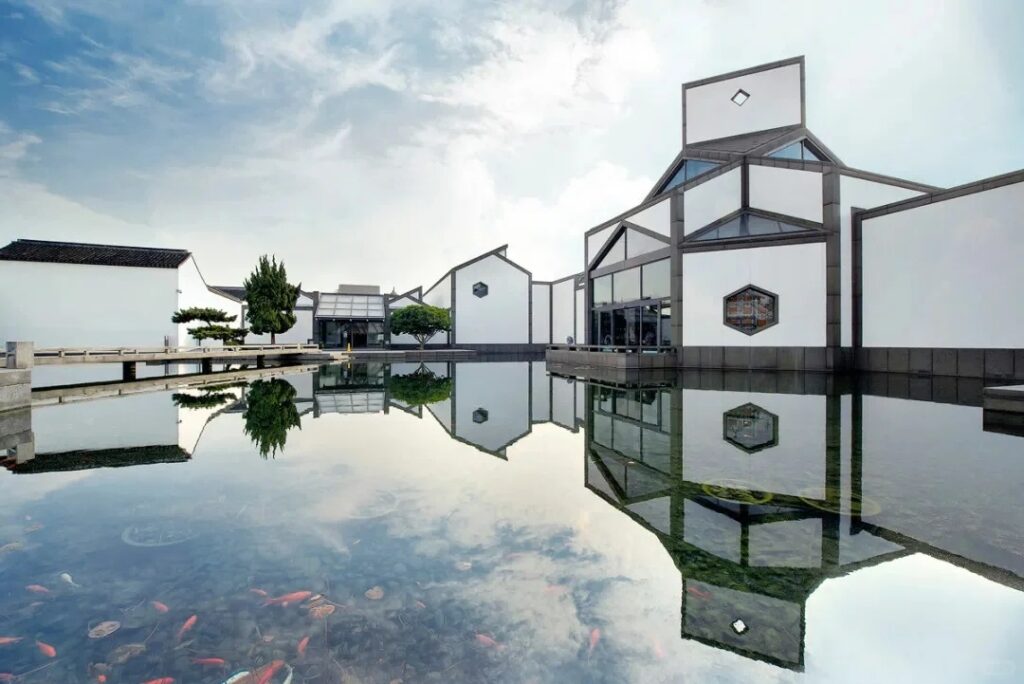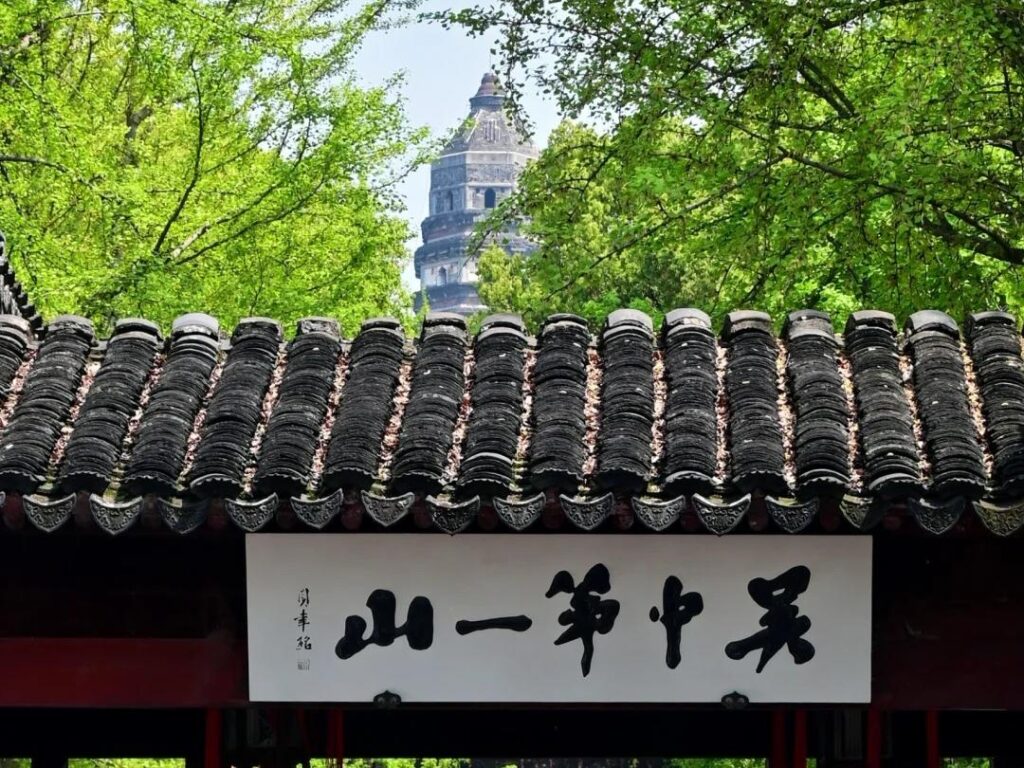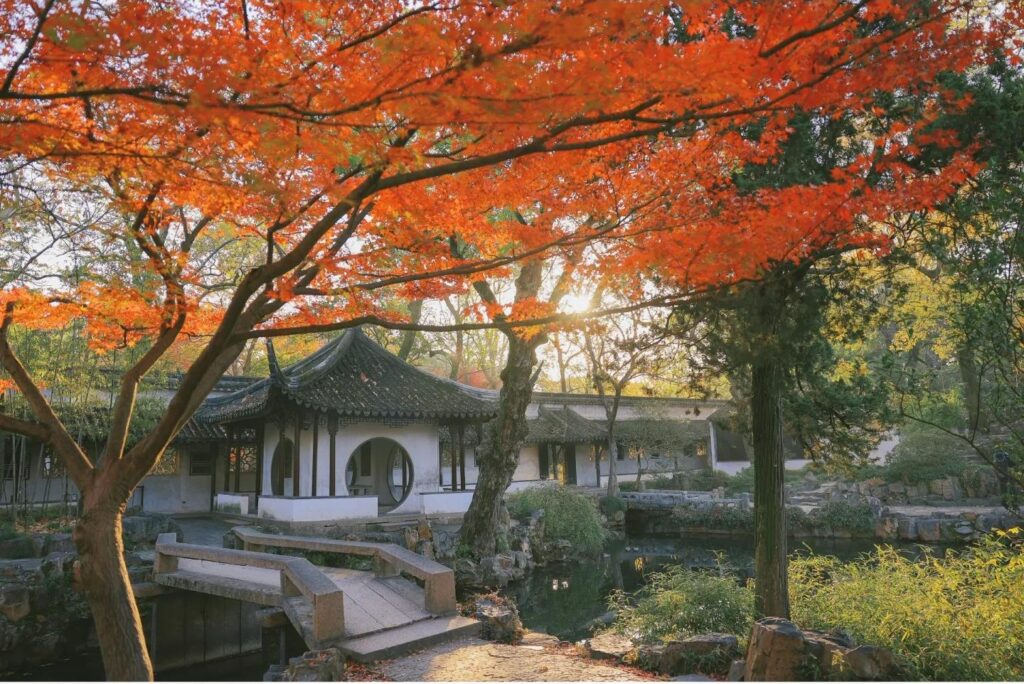Visiting Information
| Information | Details |
|---|---|
| Chinese Name | 狮子林 (Shīzi Lín) |
| Location and Address | 23 Yuanlin Road, Gusu District, Suzhou, Jiangsu Province, China |
| Opening Time/Hours | 7:30 AM – 5:00 PM (March to October) 7:30 AM – 4:30 PM (November to February) |
| Entrance Fee | CNY 40 (March to October) CNY 30 (November to February) |
| How to Get There | By Metro: Line 2 to Shiquan Street Station, then walk about 1 km By Bus: Take bus 202, 270, 301, 313, 529, 933 to Lion Grove Garden Station By Taxi: About 20 minutes from Suzhou Railway Station |
| Best Time for Visit | Spring (March to May) or Autumn (September to November) for pleasant weather and beautiful scenery |
| Contact Info | Phone: +86 512 6757 6328 Email: Not available |
Overview
Lion Grove Garden, also known as Shizilin, is a renowned classical Chinese garden located in Suzhou, Jiangsu Province. It is one of the four most famous gardens in Suzhou, along with the Humble Administrator’s Garden, Lingering Garden, and Master of the Nets Garden. The garden is famous for its intricate rockery, which resembles a group of lions in various poses, giving the garden its name. Covering an area of about 1.1 hectares, Lion Grove Garden is a masterpiece of Chinese garden art, combining natural beauty with architectural elegance.
Historical Background
Lion Grove Garden was originally built in 1342 during the Yuan Dynasty by a Zen Buddhist monk named Wen Tianru and his disciples. It was designed as a memorial to his teacher, Abbot Zhongfeng. The garden changed hands multiple times throughout history, experiencing periods of neglect and restoration. In the Qing Dynasty, Emperor Qianlong visited the garden twice and was so impressed that he had a replica built in the Changchun Garden of the Summer Palace in Beijing. The garden was extensively renovated in 1917 and opened to the public in 1956. In 2000, it was included in the UNESCO World Heritage List as part of the Classical Gardens of Suzhou.

Architectural Features
- Labyrinthine Rockery: The centerpiece of the garden is its complex rockery, made from Taihu stones. These rocks are arranged to resemble lions in various poses, creating a three-dimensional maze that visitors can explore. The rockery is considered one of the most exquisite examples of its kind in Chinese garden design.
- True Meaning Pavilion: This central pavilion offers a panoramic view of the garden and is surrounded by water on three sides. Its name reflects the Buddhist concept of seeking true meaning in life.
- Celestial Bridge: A winding bridge that connects different parts of the garden, offering unique views of the rockery and surrounding landscape.
- Lion Forest Hall: The main building of the garden, featuring intricate wood carvings and serving as a space for gatherings and contemplation.
- Ponds and Waterways: The garden incorporates several ponds and streams, adding a sense of tranquility and reflecting the surrounding structures and rockery.
Cultural Importance
Lion Grove Garden holds significant cultural importance in Chinese history and garden design. It exemplifies the art of classical Chinese gardens, particularly the Suzhou style, which emphasizes the harmony between man-made structures and natural elements. The garden has inspired poets, painters, and scholars throughout history, including Emperor Qianlong, who wrote numerous poems about it. Its unique rockery design has influenced Chinese landscape architecture and continues to be studied by garden designers worldwide. The garden also reflects Buddhist philosophy and the Chinese concept of finding spiritual meaning within nature.
Surrounding Attractions
- Pingjiang Road: A historic street near Lion Grove Garden, known for its well-preserved Ming and Qing dynasty architecture, canals, and traditional bridges. It offers a glimpse into old Suzhou life and is perfect for a leisurely stroll.
- Suzhou Museum: Designed by renowned architect I.M. Pei, this modern museum showcases Suzhou’s rich cultural heritage through its collection of ancient art, ceramics, and textiles. Its contemporary design provides an interesting contrast to the traditional gardens nearby.
- Humble Administrator’s Garden: The largest of Suzhou’s gardens and another UNESCO World Heritage site. It’s known for its expansive layout, numerous pavilions, and beautiful water features, offering a different perspective on classical Chinese garden design.
- Hanshan Temple: A famous Buddhist temple located on the outskirts of Suzhou, known for its pagoda and the bell-ringing ceremony held on New Year’s Eve. It’s mentioned in a famous poem by Zhang Ji from the Tang Dynasty.

Photography Opportunities
- Rockery Maze: The intricate stone formations offer endless possibilities for unique shots, especially when capturing the interplay of light and shadow among the rocks.
- Reflections in Ponds: The garden’s water features provide perfect opportunities for capturing reflections of pavilions, bridges, and rockery, particularly beautiful during calm mornings or evenings.
- Architectural Details: The ornate carvings, tilework, and lattice windows of the garden’s buildings offer interesting close-up photography subjects, showcasing the craftsmanship of traditional Chinese architecture.
- Seasonal Changes: Each season brings different photographic opportunities, from spring blossoms to autumn foliage, allowing photographers to capture the garden’s ever-changing beauty throughout the year.
- Panoramic Views: The True Meaning Pavilion and other elevated points in the garden offer excellent vantage points for capturing wide-angle shots of the entire garden layout.
Modern Importance
- Cultural Heritage Preservation: As a UNESCO World Heritage site, Lion Grove Garden plays a crucial role in preserving and showcasing classical Chinese garden design, serving as a living museum of this unique art form.
- Tourism: The garden is a major tourist attraction in Suzhou, contributing significantly to the local economy and helping to promote Chinese culture to international visitors.
- Education: Lion Grove Garden serves as an important educational resource for students of architecture, landscape design, and Chinese culture, offering insights into traditional design principles and philosophies.
- Artistic Inspiration: The garden continues to inspire contemporary artists, photographers, and designers, influencing modern interpretations of Chinese aesthetics in various fields.
- Urban Green Space: In the rapidly developing city of Suzhou, Lion Grove Garden provides a valuable green space and a peaceful retreat for both locals and visitors, contributing to the city’s livability and environmental quality.

FAQ
- What is Lion Grove Garden famous for?
Lion Grove Garden is famous for its intricate rockery that resembles lions in various poses, its classical Chinese garden design, and its historical significance as a Yuan Dynasty garden. - What’s inside Lion Grove Garden?
Inside Lion Grove Garden, you’ll find a complex rockery maze, pavilions, ponds, bridges, and traditional Chinese architecture, all arranged in harmony to create a tranquil and aesthetically pleasing environment. - Is Lion Grove Garden free?
No, Lion Grove Garden is not free. There is an entrance fee of CNY 40 from March to October and CNY 30 from November to February. - Is Lion Grove Garden worth visiting?
Yes, Lion Grove Garden is definitely worth visiting. It’s considered one of the four most famous gardens in Suzhou and offers a unique experience with its lion-shaped rockery and classical Chinese garden design. - What to do in Lion Grove Garden?
In Lion Grove Garden, you can explore the rockery maze, admire the traditional architecture, enjoy the peaceful ponds and waterways, take photos, and experience the art of classical Chinese garden design. - How do I get to Lion Grove Garden in the local city?
In Suzhou, you can reach Lion Grove Garden by taking Metro Line 2 to Shiquan Street Station and walking about 1 km, or by taking buses 202, 270, 301, 313, 529, or 933 to Lion Grove Garden Station. - How to visit Lion Grove Garden?
To visit Lion Grove Garden, go during opening hours (7:30 AM – 5:00 PM from March to October, 7:30 AM – 4:30 PM from November to February), purchase a ticket at the entrance, and allow at least 1-2 hours to fully explore the garden. It’s best to visit in the morning to avoid crowds.






